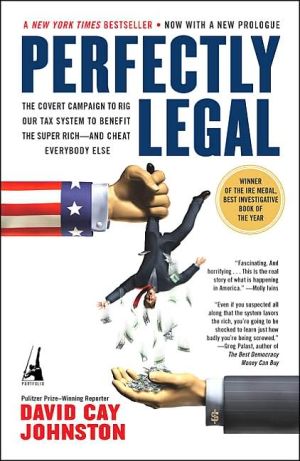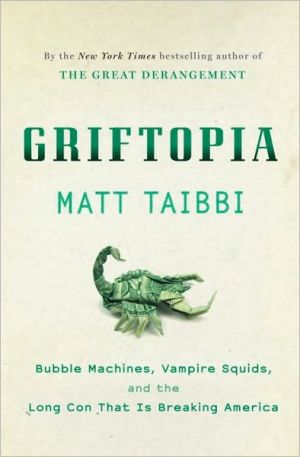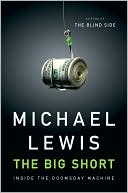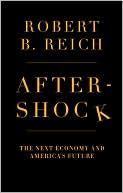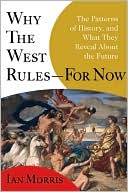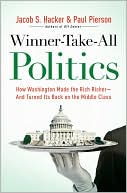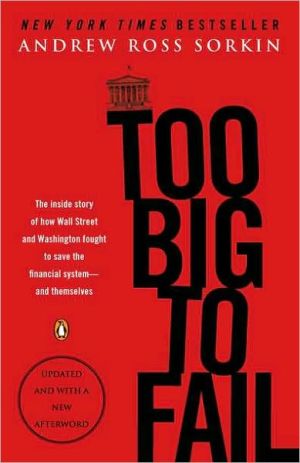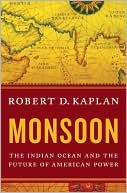Perfectly Legal: The Secret Campaign to Rig Our Tax System to Benefit the Super Rich - and Cheat Everybody Else
Now updated with a new prologue!\ Since the mid-1970s, there has been a dramatic shift in America's socioeconomic system, one that has gone virtually unnoticed by the general public. Tax policies and their enforcement have become a disaster, and thanks to discreet lobbying by a segment of the top 1 percent, Washington is reluctant or unable to fix them. The corporate income tax, the estate tax, and the gift tax have been largely ignored by the media. But the cumulative results are remarkable:...
Search in google:
The rapidly widening gulf between the super rich and everyone else is an American tragedy. Pundits have raged about it, but until now, no one has explained exactly how it happened, why it's not a normal part of capitalism, or how much damage it's really causing -- not just to the poor, but to 99 percent of all Americans. Whether your family makes $30,000 or $300,000 a year, you are being robbed because the IRS and other institutions have been systematically corrupted -- under both Republican and Democratic administrations -- to serve the needs of people who make millions. If you're the kind of person who works hard and plays by the rules, prepare to be outraged. Perfectly Legal will show you why the American Dream is turning into a lie. This explosive book, by an award-winning investigative reporter, reveals exactly how the tax code and many other laws have been twisted over the past three decades to subsidize the richest and most powerful fraction of 1 percent of our country. For nine years, David Cay Johnston has been exposing this covert campaign, piece by piece, on the front page of The New York Times. His scoops about outrageous tax scams have ruffled the feathers of powerful business leaders, politicians, and members of the political donor class. He routinely exposes the CEOs who fly corporate jets to Myrtle Beach for a day of golf and stick you with the bill; the business owners who build overseas factories to earn tax-free dollars; the former IRS employees who now teach multimillionaires how to hide their assets from the government. Now Johnston offers a raft of compelling new stories about real people across all areas of society. In Perfectly Legal, you'll meet sleazy accountants and brazen tax cheats, clueless congressmen and crafty lobbyists. You'll meet frustrated IRS agents who have been handcuffed from pursuing the most blatant lawbreakers. And you'll meet ordinary Americans who are struggling to make a decent living but whose future is being undermined in ways they don't even realize. Compared to thirty years ago, every American now lives in a society much less equal and much more fraught with financial risk. Perfectly Legal lays out the details in plain English and shows how we can stop these trends before it's too late. The New York Times As Johnston knows, the real scandal of our federal tax system isn't so much what the rich didn't pay. It's what the rest of us now have to -- particularly the middle and upper middle classes, with incomes from $50,000 to $500,000. This is the group Bush is squeezing, to benefit what Johnston aptly calls the ''political donor class.'' This truly shocking story emerges later on in Perfectly Legal. — James K. Galbraith
Perfectly Legal\ The Covert Campaign to Rig Our Tax System to Benefit the Super Rich--And Cheateverybody Else \ \ By David Cay Johnston \ Portfolio\ Copyright © 2005 David Cay Johnston\ All right reserved.\ ISBN: 1591840694 \ \ \ Chapter One\ The Rich Get Fabulously Richer \ In 1977, the richest 1 percent of Americans had as much to spend after taxes as the bottom 49 million. Just 22 years later, in 1999, the richest 1 percent-about 2.7 million people-had as much as the bottom 100 million Americans. Few figures derived from the official government data on incomes present more starkly the growing chasm between the rising incomes at the top and the falling incomes at the bottom.\ Those in the top 1 percent saw their average income, adjusted for inflation to 1999 dollars and after income taxes were paid, more than double from $234,700 in 1977 to $515,600 in 1999. Meanwhile, the 55 million Americans in the poorest fifth of the population lived in households whose average income fell from $10,000 in 1977 to $8,800 in 1999. The Center for Budget and Policy Priorities, a liberal group that advocates for the poor, calculated these figures from the sophisticated income data that the Congressional Budget Office began collecting in 1977. Studies by other economic research and advocacy organizations made similar findings using other official data. Across the political spectrum, economistsfound the same basic trend: the rich really are getting richer and the poor really are getting poorer.\ Looking more closely at the top fifth gives a hint as to how incomes were changing in the last three decades of the twentieth century. Think of a ladder with 100 rungs. The poorest person in America stands at the bottom and the person with the biggest income stands at the top, with everyone else taking their place on the rungs in between.\ Between 1973 and 2001, those whose income ranked them above 80 percent of Americans but below the richest 5 percent-those on the eightieth up to the ninety-fifth rungs-saw their share of national income rise almost imperceptibly. The Bureau of the Census calculated that in 2001 they earned 27.7 percent of all income, up from 27 percent in 1973.\ The top 5 percent did much better. Their share of the national income grew by more than a third, from 16.6 percent to 22.4 percent. There is the suggestion of a pattern here, of those at the top of the ladder having so much added income that it is reinforcing their position, holding the middle class in place and squeezing those at the bottom, whose incomes were falling.\ While the Bureau of the Census did not break the numbers down further, many others did. The National Bureau of Economic Research, the nonprofit organization that makes the official decisions about whether the country is in recession or expansion, published the most extensive analysis. The bureau's president is Martin A. Feldstein, the Harvard University economics professor who was President Ronald Reagan's chief economics adviser. He is a leading proponent of supply-side economics, the idea that economic growth is most likely if taxes on high earners are lowered and more capital can be invested. Economists of every political view rely on the bureau's data and reports because of its reputation for analysis based on facts.\ Thomas Piketty and Emmanuel Saez, both French economists, wrote a paper the National Bureau of Economic Research published in 2002 that examined in fine detail income and wealth data for the years 1917 through 2000. They relied mostly on the National Income and Products Accounts, the most comprehensive economic data the government collects, and on tax data. Their study focused not on all Americans, but on those who made the most and how they fared compared to everyone else.\ There are many ways to measure income. First we will consider what Piketty and Saez found about the portion, or share, of income going to people at each income level. That is, how big each income group's slice of the pie was. Then we will examine the average incomes of people.\ They drew their first line between the top 10 percent and the bottom 90 percent. Overall the bottom 90 percent lost ground. Their share of national income fell from two thirds to slightly more than half. And their average income, adjusted for inflation, was essentially the same in 2000 as in 1970. The average income for the bottom 90 percent in 2000 was $25,035, which was $25 less than three decades earlier.\ The top 10 percent of Americans had done very well since 1970, or so it seemed at first blush. These 11.3 million households, comprising roughly the population of California, saw their share of national income grow by almost half, from just under 33 percent in 1973 to just above 48 percent in 1998. When examined more closely, however, a curious trend appeared. The figures showed that the higher the income group, the larger the income gains.\ Piketty and Saez cut off the top 10 steps on the ladder and divided the top 10 percent into ever-smaller segments of the population.\ They examined those on the rungs from 90 to 95. Their share of the national income was flat. Next came the slightly smaller group between rungs 95 and 99. Their share grew by 19.5 percent.\ Next the professors sliced off the top rung on the ladder, the top 1 percent or about 1.3 million households, roughly the population of Kentucky. This group earned more than a fifth of all the income in the country. The economists broke the top 1 percent down into ever-finer amounts, into minirungs on the ladder, the smallest of which represented a hundredth of 1 percent, or about 13,400 of the country's 134 million taxpayer households.\ They examined the bottom half of the top 1 percent. Their share of national income grew by 47 percent, which was more than twice the rate of the group just below them on the income ladder.\ The professors then looked at those on the minirungs from 99.5 to 99.9. Their share of national income grew even more, rising by 90 percent. Next came those on the minirungs from 99.9 to 99.99, just 120,000 households. Their share of national income more than tripled, growing 227 percent.\ Finally, the professors examined the very top rung, the richest 13,400 households. These are the people who made more than 99.99 percent of their fellow Americans. They had by far the biggest gains. Their share of national income in the year 2000 was more than five times what it had been in 1970. Back then this elite group received 1 percent of national income, while in 2000 it received more than 5 percent. Even more telling was how it had done compared to those fortunate enough to stand between the ninetieth and ninety-fifth rungs-the top group's share of income had grown almost 1,000 times faster.\ The average income of all households in 2000 was $42,700, while the 13,400 households at the very top had an average income of $24 million each or 560 times the average. It was not always this way. In 1970 the very top group had about 100 times the average.\ Clearly the only significant income gains over three decades went to a very narrow slice at the top. After adjusting for inflation, for each dollar of income in 1970 the top 13,400 households had four additional dollars plus a dime to spend in 2000, while the average household in the bottom 99 percent had only eight cents more per dollar.\ The enormous concentration of income among a very very few becomes even clearer with a simple comparison of income growth between 1970 and 2000. How did the top one hundredth of 1 percent compare to the bottom 99 percent? For each dollar of additional income going to each of those in the bottom 99 percent of Americans the richest each averaged an astonishing $7,500.\ Applying the National Bureau of Economic Research report to the incomes reported on tax returns in 2000 produces an astonishing result. The 13,400 top households had slightly more income than the 96 million poorest Americans. That is a chasm vastly greater than the liberal Center on Budget and Policy Priorities reported when it said that the top 2.7 million had as much as the bottom 100 million.\ The data show that slices of the pie have changed, with a few getting a lot bigger share and many getting less. Now let's look at a second way to analyze the data by examining actual incomes, at what Piketty and Saez found about how much money people at each income level made in 2000 compared to 1970.\ What Piketty and Saez showed from the official government data was that two decades after the promise that lowering tax rates and reducing regulation would benefit everyone, the income gains were flowing straight up to the top of the income ladder. Even the derisive description by critics captured in the phrase "trickle-down economics" was not proving out. At the bottom there was less money for food, shelter and clothing. Four out of five Americans were making less or were no better off in 2000 than in 1970.\ People in the middle class and even those making more than 95 percent of their fellow Americans were working harder than ever and going nowhere fast. For those on the ninetieth rung of the ladder, average income in 2000 was $90,271, which, after adjusting for inflation, was a one-fourth increase from the $72,320 in 1970. In real terms incomes for those on the ninetieth rung rose at less than 1 percent per year, which was far less than the rate of growth in the economy.\ Those at the ninetieth rung saw their incomes rise at an annual average of less than $600 per year, compared to about $4,600 annually at the ninety-ninth rung and more than $672,000 annually for the top group, those 13,400 super-rich families.\ Money, it seems, was made to flow uphill. The great majority of Americans were, at least through 2000, having their pockets flattened or even drained, the value created by their labor flowing in a Niagara of greenbacks not to the affluent or even the merely rich, but to the megarich. But just as the liberals at the Center for Budget and Policy Priorities had understated the chasm between rich and poor, so too did Piketty and Saez.\ The figures Piketty and Saez used were pretax incomes. But changes in the tax system had vastly expanded the ability of the megarich to save while those making less than $72,000 had their ability to save stripped away by rising Social Security taxes. In 1970, the top income tax bracket was 70 percent. By 2000 it had fallen to 39.6 percent-and it is now just 35 percent. Over those same years, however, the maximum Social Security soared from $327 to $4,724, figures that double if one counts the employer contribution.\ Internal Revenue Service reports show that from 1973 to 2000, when the Democrats were mostly in control of Congress, Social Security and Medicare taxes grew 82 percent faster than incomes. Because Social Security taxes applied only to the first $76,200 of wages in 2000 (and lesser amounts in previous years), this rising burden fell mostly on the middle class and the upper middle class.\ The rich got a tax break beginning when their wages passed the maximum subject to Social Security. On dollars above the Social Security ceiling an individual pays 6.2 percent less tax because Social Security is no longer deducted from paychecks. Employers get the same tax break. For the rich, the top 1.3 million households, the Social Security tax was inconsequential.\ The tax rate on capital gains, the source of more than half of income for the super rich, was 28 percent starting in 1987, fell to 20 percent in 1998 and then was lowered again in 2003 to 15 percent.\ Over the last three decades of the twentieth century the average income grew modestly, but the share of earnings going to income and Social Security taxes rose. At the same time the super rich saw their incomes skyrocket and, because their tax rates fell, they kept an even higher percentage than before.\ In addition, the rates at which state and local governments levied sales, property and income taxes all rose in those last three decades, eating into incomes. Those taxes tend to be regressive; that is, they tend to hit harder the lower one's income.\ Piketty and Saez's facts and figures show us what happened, but they do not say why these changes occurred. Understanding how this happened involves many issues because, in a nation as complex and diverse as America, there are many ways to collar a dollar. Some of these, as we shall see, involved pumping up compensation for those high in the corporate structure, no matter how it affected the company's workers and shareholders. These strategies, in turn, had an important side effect: creating a demand for corporate tax shelters, which helped shift the overall tax burden off capital and onto labor. By 2002, the portion of federal revenues coming from corporations was below 10 percent, down from a third in the Eisenhower years. The demand for tax shelters in turn encouraged an anything-goes morality about hiding money, both corporate profits and individual incomes, from the IRS. Some companies went so far as to renounce America as their headquarters, at least on paper, once they learned that if they used a Bermuda mailbox as their tax headquarters they could earn profits tax-free in the United States.\ Arranging to have torrents of money flow to a very few pockets also required putting immense pressure on Corporate America's front lines, the employees, to make the numbers demanded from on high. Even if it meant cheating people out of their wages or disability benefits, or foisting costs off onto the taxpayers, corporate managers were driven to produce the results the home office demanded or else join the ranks of the downsized. The cuts in regulatory agencies, and even in many law enforcement agencies, made such thievery easy. When people complained that they had been cheated out of overtime or even regular pay, the agencies had no resources to pursue the cases, even when there was a pattern of abuse by brand-name companies like Wal-Mart and Taco Bell.\ In all of this, both big corporations and those among the very wealthy who wanted to handcuff law enforcement-at least when it came to stealing by business practice-had as allies their good friends in Congress. Corporate America's effort to mold both political parties to do its bidding was increasingly successful as politicians needed ever more contributions to buy the television ads that got them reelected. Politicians insisted that no one bought their vote with their donation and that was true. But what donations did buy, every politician acknowledged, was access. That access meant that every senator and representative was listening primarily to the concerns and ideas of the super rich, of the political donor class. At the same time the forces arrayed on the other side-unions, consumer advocates and social service charities-had little to give and, except for the unions, were barred by law from making campaign donations.\ \ \ \ Continues... \ \ \ \ Excerpted from Perfectly Legal by David Cay Johnston Copyright © 2005 by David Cay Johnston. Excerpted by permission.\ All rights reserved. No part of this excerpt may be reproduced or reprinted without permission in writing from the publisher.\ Excerpts are provided by Dial-A-Book Inc. solely for the personal use of visitors to this web site. \ \
AcknowledgmentsPrologue1Ch. 1Taxes - They're Not for Everyone5Ch. 2A Nickel an Hour More20Ch. 3The Rich Get Fabulously Richer30Ch. 4Big Payday45Ch. 5Plane Perks59Ch. 6When the Old Man Is Dead and Buried71Ch. 7The Stealth Tax92Ch. 8How Social Security Taxes Subsidize the Rich117Ch. 9Preying on the Working Poor129Ch. 10Handcuffing the Tax Police145Ch. 11Mr. Rossotti's Customers157Ch. 12For Want of a Keystroke169Ch. 13Mr. Kellogg's Favorite Loophole186Ch. 14Mass Market Tax Evasion194Ch. 15Getting off the Hook207Ch. 16Profiting off Taxes217Ch. 17Profits Trump Patriotism229Ch. 18Letters to Switzerland251Ch. 19Gimme Shelter262Ch. 20Only the Rich Deserve a Comfortable Retirement274Ch. 21Is Reform Possible?292Conclusions305Notes319Index329
\ The New York TimesAs Johnston knows, the real scandal of our federal tax system isn't so much what the rich didn't pay. It's what the rest of us now have to -- particularly the middle and upper middle classes, with incomes from $50,000 to $500,000. This is the group Bush is squeezing, to benefit what Johnston aptly calls the ''political donor class.'' This truly shocking story emerges later on in Perfectly Legal. — James K. Galbraith\ \ \ \ \ Publishers WeeklySince he began writing about taxes for the New York Times in 1995, Johnston's investigative reporting has earned two Pulitzers. The journalistic legwork informs every page of this expos of the ways in which, he says, America's taxation system is stacked in favor of the wealthy. Johnston evades the imposing abstractness of the tax code by keeping the story focused on individuals, from working-class parents facing audits to Internal Revenue Service officials desperate for the resources to revamp their procedures. Chapters addressing the inability of the IRS to go after the worst tax cheats, thanks in part to opposition from grandstanding members of Congress, are particularly effective in putting a spotlight on the problem, but there's plenty of space given to revealing how canny tax attorneys come up with legal (and barely legal) ways to get around the system. And for those who can afford it, he reports, there's always a new dodge available once the law has caught up to the latest tricks. At some points, dealing with numbers becomes unavoidable, but even here Johnston displays a knack for breaking the story down into easily grasped components. Though the tax cuts engineered by Presidents Reagan and George W. Bush receive most of the criticism, Democrats come in for their fair share of opprobrium. Genuine reform, he suggests, will require serious and sustained attention from the public, not just reflexive griping. His book is a thoughtful overview for any citizens willing to educate themselves on the issue. (Jan.) Copyright 2003 Reed Business Information.\ \
